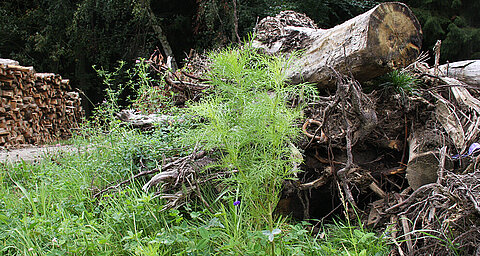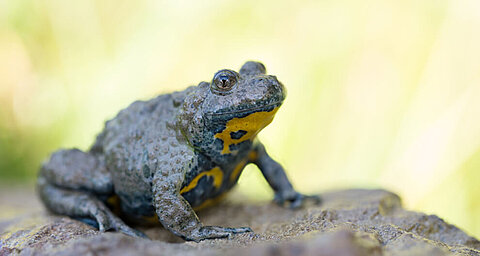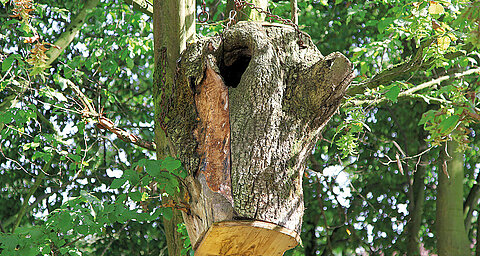Ehrensberg Farm
HiPP model farm for organic farming
HiPP erprobt auf der Einöde Ehrensberg Umweltmaßnahmen zur Verbesserung der Biologischen Vielfalt. Ziel ist es, diesen Bio-Hof bis 2015 als Musterbetrieb nachhaltig und effektiv zu bewirtschaften. Er soll zukünftig als Modell für die HiPP Erzeuger dienen.
Wir wollen zeigen, wie Nachhaltigkeit und der Schutz der Biologischen Vielfalt in den landwirtschaftlichen Alltag integriert werden können.
Cultivated land plan and collection of scientific data
The natural determining factors for the location of farms and farmland produce concrete suggestions for the improvement of species diversity and nature conservation. On this project we are working together with Bioland, Munich Technical University and Hanover Technical University, as well as the Bavarian Council for Bird Protection.
In order to increase species diversity, rare old breeds have found a home on the farm: original Braunvieh cattle, of which there are only 500 animals left in Bavaria, Skudde sheep (currently 1000 animals in Germany) and the old chicken breed Appenzeller Spitzhauben.
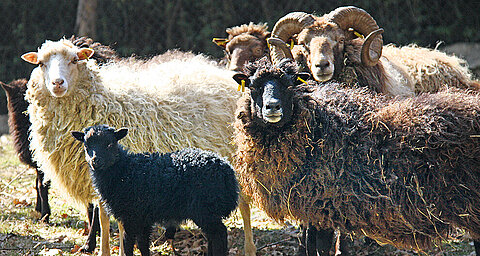

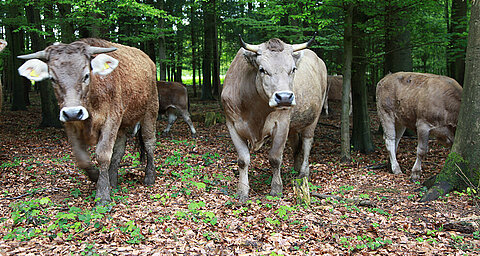
According to the Red List of threatened farm animals, the original Braunvieh cattle are “very endangered”. On the Ehrensberg farm, HiPP’s model project for sustainable farming, this breed is kept appropriate to its species. The original Braunvieh cattle descended from the so-called Torfrind cattle, which were grazing by the lakes on the edge of the Alps well over 2,000 years ago.

The red-backed shrike is an important species for an intact ecosystem. Due to intensive farming there are fewer hedges and bushes as a natural habitat for birds. It already belongs on the endangered species list. This rare bird is best known for spearing its victims on thorns. According to popular belief, it always collects nine insects before eating them. HiPP has created new habitats for the red-backed shrike on the Ehrensberg farm and as apprentice initiatives has set up deadwood hedges (branches and twigs) at the edges of fields.
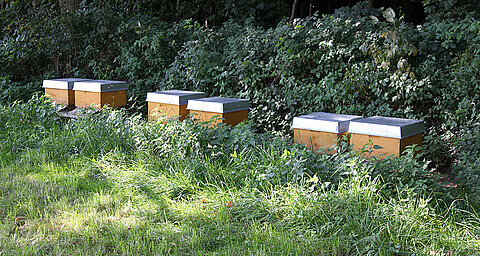
Many people could live without honey, but not without bees. The insects not only deliver sweet spread for bread but above all pollinate flowers. In doing so, they secure the existence of plants and ensure good crops for the farmers. Without these animals, the fruit harvest would be in danger. When bees die or are ill, it affects us all. This is why HiPP is also involved in the preservation of natural habitats for bees with biodiversity projects. The Ehrensberg farm is now also home to six bee colonies, established as a reaction to the dramatic collapse of bee populations.
New ecosystems such as rows of trees, protective hedgerows (e.g. for the red-backed shrike), deadwood hedges, rootstocks and flowering strips at the edges of fields and in the meadows were created to offer habitats to reptiles, birds, small mammals and insects. The principle of deadwood hedges is not to create new hedges by planting them, but to let them be created by wind and seed flight. Branches, twigs and sticks are piled up as a loose wall, which also provides protection for growing plants. The advantages of such constructions are, one the one hand, the low construction costs and, on the other hand, the loosely piled deadwood offers a home to numerous rare species.
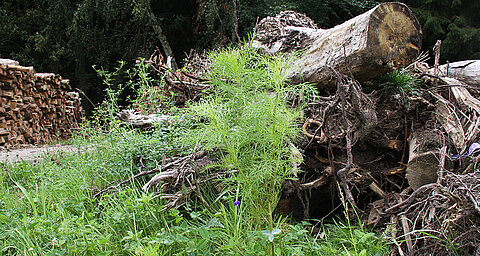
In conventional farming, the fields and meadows are planted right up to the edge of the forests, for more yield. To support biodiversity and sustainability, we plant wild hedgerows with deadwood and native wild flowers. These provide the animals with a place to live, offer the cattle protection from the wind and reduce soil erosion.
Improving soil quality
Concerning the improvement of soil fertility, different methods have been tried out in the model project, for example using rock flour to bind ammonia, solid manure fertilization and other natural methods. Also, measures to support animal health, such as using effective micro-organisms or organic straw as litter, are used.




